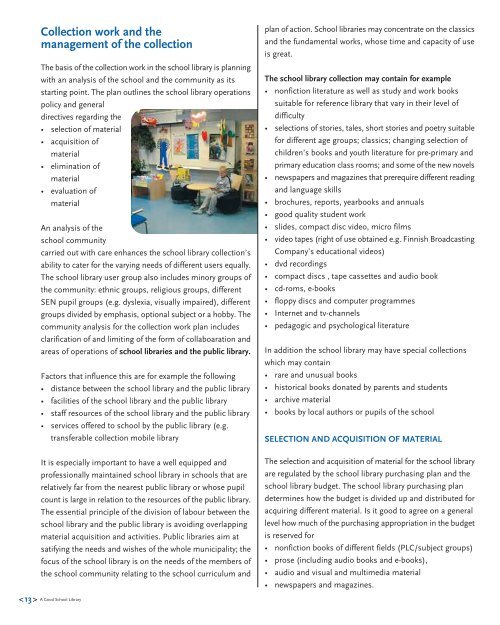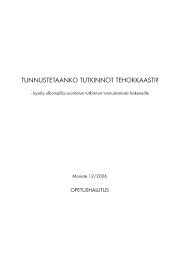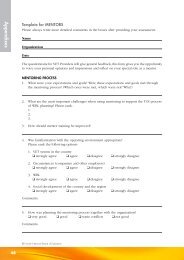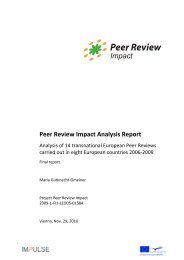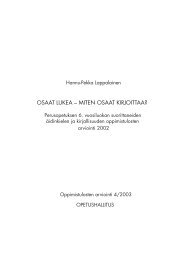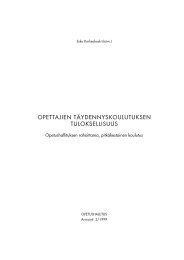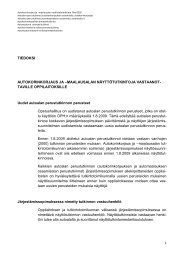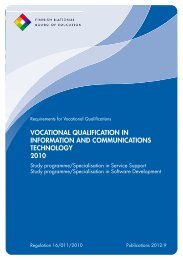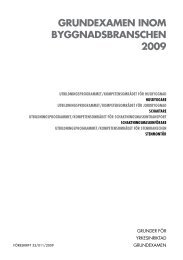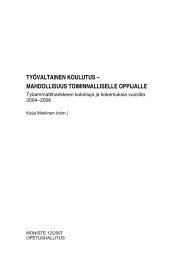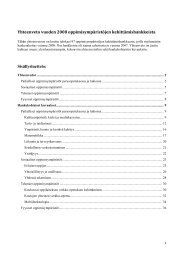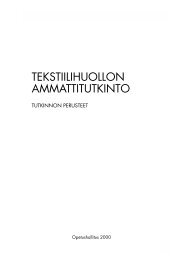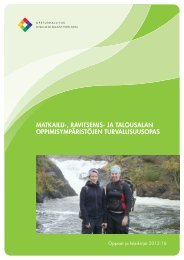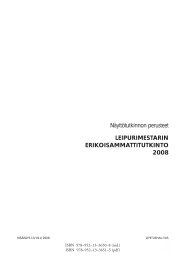School Library A Good
School Library A Good
School Library A Good
Create successful ePaper yourself
Turn your PDF publications into a flip-book with our unique Google optimized e-Paper software.
Collection work and the<br />
management of the collection<br />
The basis of the collection work in the school library is planning<br />
with an analysis of the school and the community as its<br />
starting point. The plan outlines the school library operations<br />
policy and general<br />
directives regarding the<br />
• selection of material<br />
• acquisition of<br />
material<br />
• elimination of<br />
material<br />
• evaluation of<br />
material<br />
An analysis of the<br />
school community<br />
carried out with care enhances the school library collection’s<br />
ability to cater for the varying needs of different users equally.<br />
The school library user group also includes minory groups of<br />
the community: ethnic groups, religious groups, different<br />
SEN pupil groups (e.g. dyslexia, visually impaired), different<br />
groups divided by emphasis, optional subject or a hobby. The<br />
community analysis for the collection work plan includes<br />
clarification of and limiting of the form of collaboaration and<br />
areas of operations of school libraries and the public library.<br />
Factors that influence this are for example the following<br />
• distance between the school library and the public library<br />
• facilities of the school library and the public library<br />
• staff resources of the school library and the public library<br />
• services offered to school by the public library (e.g.<br />
transferable collection mobile library<br />
plan of action. <strong>School</strong> libraries may concentrate on the classics<br />
and the fundamental works, whose time and capacity of use<br />
is great.<br />
The school library collection may contain for example<br />
• nonfiction literature as well as study and work books<br />
suitable for reference library that vary in their level of<br />
difficulty<br />
• selections of stories, tales, short stories and poetry suitable<br />
for different age groups; classics; changing selection of<br />
children’s books and youth literature for pre-primary and<br />
primary education class rooms; and some of the new novels<br />
• newspapers and magazines that prerequire different reading<br />
and language skills<br />
• brochures, reports, yearbooks and annuals<br />
• good quality student work<br />
• slides, compact disc video, micro films<br />
• video tapes (right of use obtained e.g. Finnish Broadcasting<br />
Company’s educational videos)<br />
• dvd recordings<br />
• compact discs , tape cassettes and audio book<br />
• cd-roms, e-books<br />
• floppy discs and computer programmes<br />
• Internet and tv-channels<br />
• pedagogic and psychological literature<br />
In addition the school library may have special collections<br />
which may contain<br />
• rare and unusual books<br />
• historical books donated by parents and students<br />
• archive material<br />
• books by local authors or pupils of the school<br />
SELECTION AND ACQUISITION OF MATERIAL<br />
It is especially important to have a well equipped and<br />
professionally maintained school library in schools that are<br />
relatively far from the nearest public library or whose pupil<br />
count is large in relation to the resources of the public library.<br />
The essential principle of the division of labour between the<br />
school library and the public library is avoiding overlapping<br />
material acquisition and activities. Public libraries aim at<br />
satifying the needs and wishes of the whole municipality; the<br />
focus of the school library is on the needs of the members of<br />
the school community relating to the school curriculum and<br />
A <strong>Good</strong> <strong>School</strong> <strong>Library</strong><br />
The selection and acquisition of material for the school library<br />
are regulated by the school library purchasing plan and the<br />
school library budget. The school library purchasing plan<br />
determines how the budget is divided up and distributed for<br />
acquiring different material. Is it good to agree on a general<br />
level how much of the purchasing appropriation in the budget<br />
is reserved for<br />
• nonfiction books of different fields (PLC/subject groups)<br />
• prose (including audio books and e-books),<br />
• audio and visual and multimedia material<br />
• newspapers and magazines.


